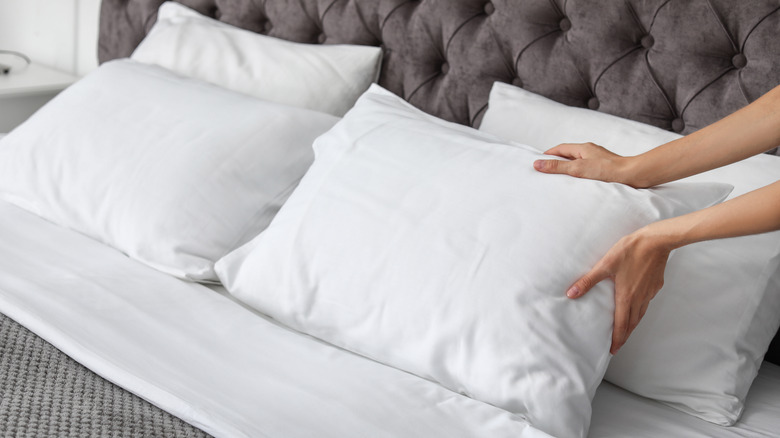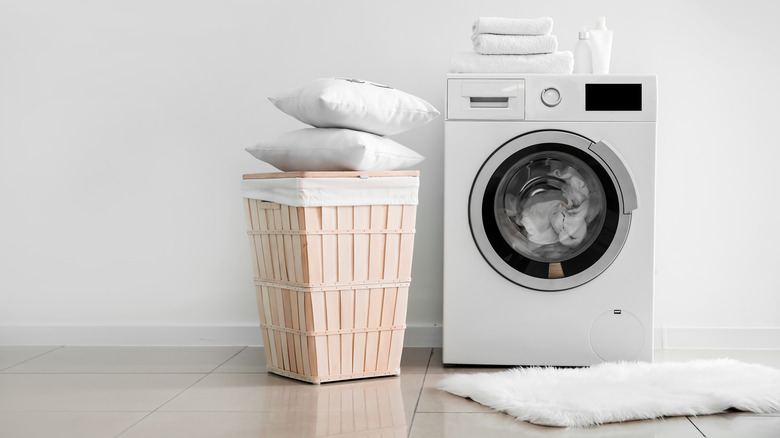How Often Should You Be Changing Your Pillowcase?
Let's get intimate for a second and chat about pillows. When you think of a pillow, what comes to mind? Maybe it's how soft and cushy your pillow is, or maybe you think about the famous saying "sweet dreams." While we may all have different associations with pillows, there's one thing we may share — we use our pillows daily.
According to a Sleep Junkie survey, seven out 10 people believe a pillow is the key ingredient for a quality sleep. To make matters more interesting, roughly 30% of respondents said they slept with two pillows, while approximately 27% slept with four. That's a lot of pillows! It's clear that pillows are needed for a good night's rest, but what's the best way to care for your pillow and pillowcase? If you've ever questioned how often you should be changing your pillowcase, here's what you need to know.
Pillowcases love to collect dirt, bacteria, and oils thanks to our lovely hair, explains certified sleep science coach Chris Brantner (via Insider). They also enjoy harboring mold and even animal diseases (sorry fur babies) for those who like snuggling up at night with a pet (per Bustle). What's more, a dirty pillowcase can aggravate allergies; the co-founder of Tuck Sleep, Bill Fish, explains to Insider that when you don't practice good pillow hygiene, you expose yourself to particles that can negatively impact your respiratory system and bring about sickness.
Start with at least once a week
On that note, there may be dead skin cells and dust mites living on your pillowcase too, points out Self. While dust mites aren't visible to the naked eye, they survive and thrive off of dead skin cells and in warm environments, thus making your pillowcase the perfect home for them. It's important to note that dust mites don't affect everyone's health. According to the American Lung Association, dust mites only impact those with sensitivity or allergies to mites and those with asthma. So the best plan of attack allergists recommend to avoid breathing in mites is to get an allergy cover for your pillows, shares Self.
Beyond allergy covers, the best way to protect your skin health is to wash your pillowcase. Board-certified allergist-immunologist Dr. Ryan Steele says once a week is plenty, using the hottest water possible (per Self), but you may want to increase the frequency depending on your other sleeping habits such as drooling or sleeping with makeup on. Make sure to pay attention to the detergent you use if you have acne-prone or sensitive skin, explains Popsugar. And don't forget to wash your allergy covers too, points out Self.
How about washing your pillow?
Now that your pillowcase is refreshed for a good night's sleep, should you consider washing your pillow too? Absolutely! According to the The Sleep Doctor, pillows should be washed regularly, just like the rest of your laundry. But your pillow-washing routine will highly depend on your lifestyle habits and how and where you use your pillow. For those who like snacking in bed, sleeping with pets, or tend to sweat a bunch while sleeping, it's best to wash your pillow every three months, explains WebMD. Otherwise pillows can be washed every six months. Body pillows, decorative pillows, and any other unique pillows fall between these three- to six-month ranges.
On average, a pillow can have a lifespan of one to four years, depending on the material it's made up of (per The Sleep Doctor). Latex pillows tend to last the longest (four years), followed by polyfoam, memory foam, and buckwheat, which can last up to three years, shares Sleep Foundation.
However, if your pillow becomes lumpy, stinky, has stains that won't come out, or has lost its dreamy fluffiness, it's a sign your pillow needs to be replaced, points out The Sleep Doctor. In this case, a clean pillowcase or a freshly washed pillow won't fix this, so it's best to get a new pillow altogether. Know that your body and mind will be happy you did.



